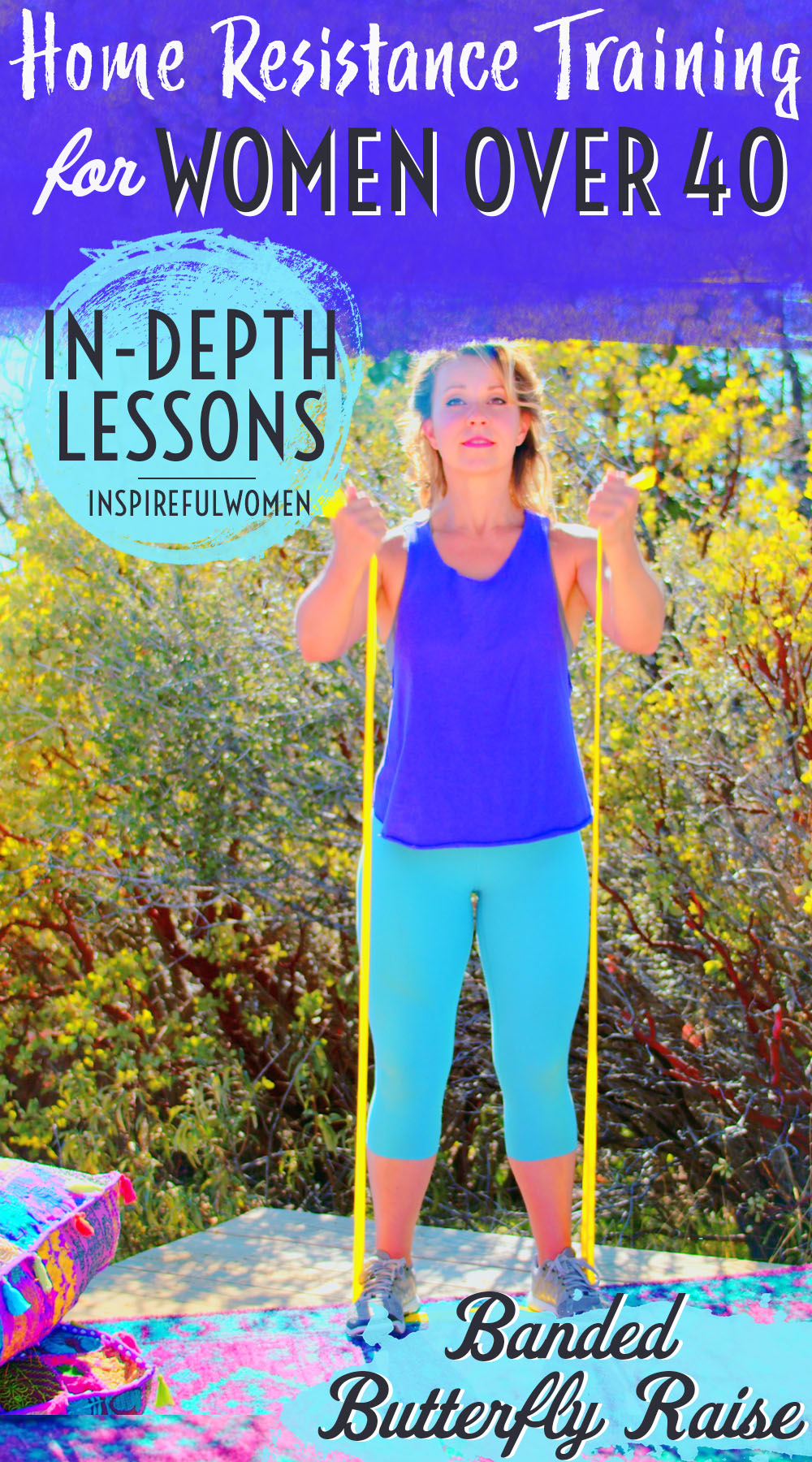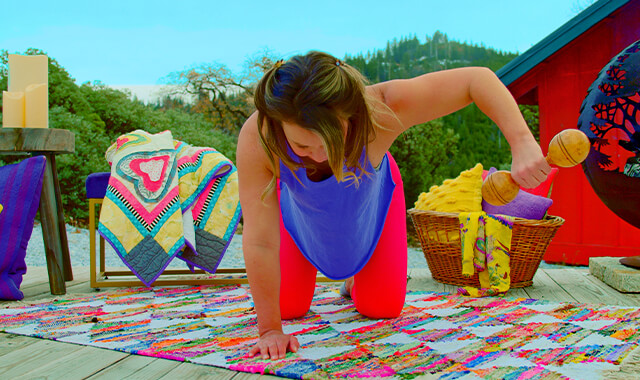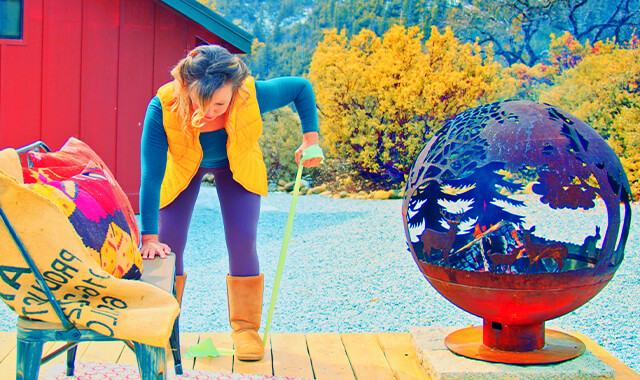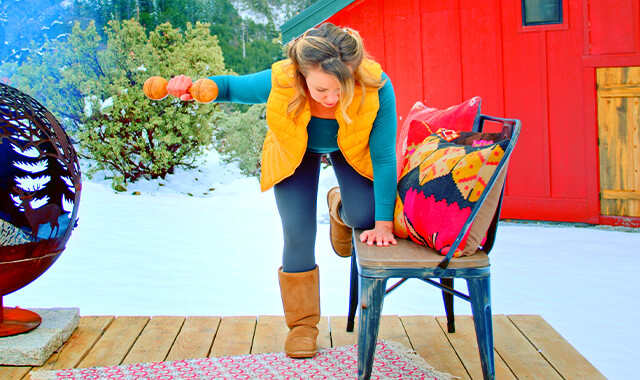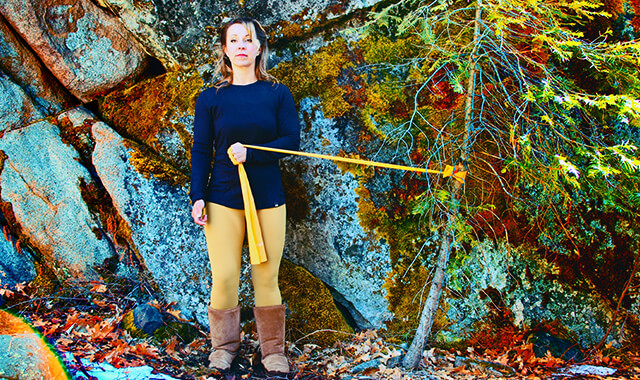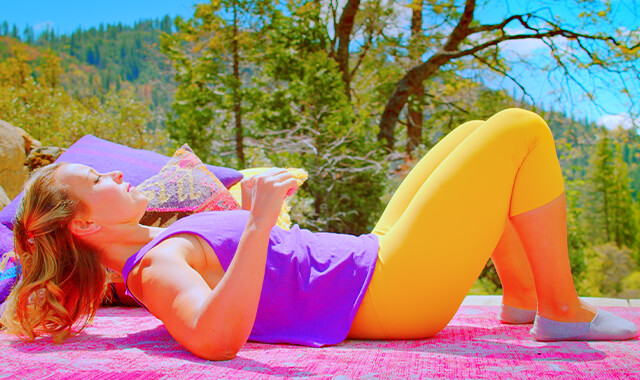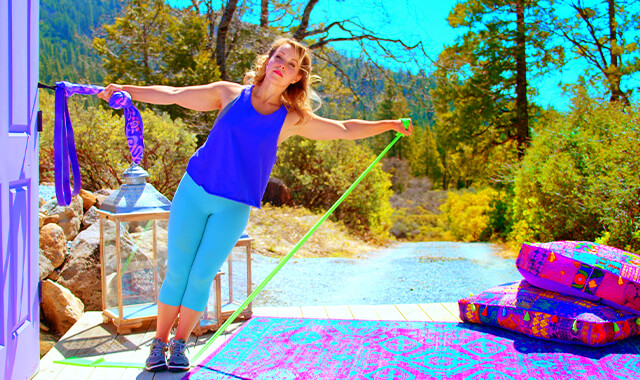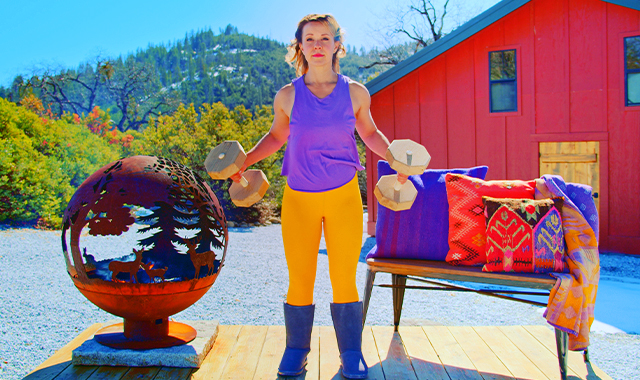Band Butterfly Raises
How to Do the Band Butterfly Lateral Delt Raise | In-Depth Guide [VISUAL LEARNERS] Intermediate
Proper Form & Common Mistakes | Home Resistance Training
WHAT DO YOU WANT TO SEE?
QUICK DEMO
QUICK DEMO
MUSCLES THIS WORKS
MUSCLES
MAIN MUSCLES WORKED IN Band Butterfly Raises
ANTERIOR & LATERAL DELTOIDS
OTHER MUSCLES WORKED:
- ROTATOR CUFF (supraspinatus, infraspinatus, teres minor, subscapularis)
- SCAPULAR MUSCLES (serratus anterior, rhomboids, trapezius, latissimus dorsi, pectorals)
- BICEPS
STARTING POINTERS
Starting Pointers
WHAT WE'RE DOING TODAY
ALL WE'RE DOING:
This one you will need to read the full directions on. Or better yet, watch the video!
Butterfly Raise is one of the best exercises to strengthen the lateral deltoid in a way that is easy and effective. This lateral raise variation is performed using a resistance band. This is a good choice for home and travel because the band is portable and the feet are used to anchor the band.
Using a resistance band will target more of the side (lateral) and some rear (posterior) deltoid because as the arms move up and out the resistance from the band will increase. The band will also be pulling down on the hands, this will activate the posterior deltoid to hold the arm in neutral at the top of the movement.
HOW TO DO THE EXERCISE
LOOKS
HOW Band Butterfly lateral Raises SHAPE OUR BODY
Toned, rounded/capped shoulders. Which then contributes to a more tapered, smaller looking waist!
PROPER FORM
PROPER FORM: Band Butterfly Raises
EQUIPMENT, SETS & REPS
EQUIPMENT
Main set (3: Light/Med/Heavy)
X-Heavy Band (I recommend getting this too if you plan to use resistance bands frequently).
SUGGESTED STARTING WEIGHT FOR WOMEN:
Moderate resistance bands
SETS & REPS:
2 sets of 8-10 reps
PACE:
Smooth and controlled up and down.
BODY POSITION
BODY POSITION FOR THE Band Butterfly Raise
BAND: Anchored under both feet, holding one end in each hand.
FEET: Feet shoulder width apart, toes pointed forward.
BODY STANCE: Neutral spine position, knees slightly bent, sternum lifted, space between the top of your shoulders and ear lobe. Chest wide.
ARM: Upper arms right by your sides, in line with torso. Elbows bent - with forearms parallel to the floor, (bent to right angle or 90 degrees) the position you would have your arms to carry a plate.
GRIP: Forearms in supination - palms up - band around palm of hand. The band on the little finger side of your palm, crossing over to your thumb side. The band can be taut in the beginning position but you will want to make sure that you can get your upper arm up to parallel to the floor (the end range of the movement).
HOW TO DO
HOW TO DO Band Butterfly Raises
CUE: Your elbows stay bent during the entire exercise. Your upper arm slides forward and up - working your front deltoid, and then moves out to the sides - working your side deltoid. This should be a fluid, curving motion - at first it may seem mechanical as you are learning to feel the different fibers of the deltoid muscles working.
Slide your upper arm forward until your hands are approximately at shoulder height.
Continue lifting your arms up as your elbows begin to move out away from your body. Continue lifting until your elbows are level with your shoulders - at this point, your arms are not quite all the way out to the side. The hands will be about the level of the top of your head.
Reverse the movement to lower back down to the starting position.
HOW TO SAFELY GET OUT OF THE EXERCISE
From the starting position, straighten your arms and release the band.
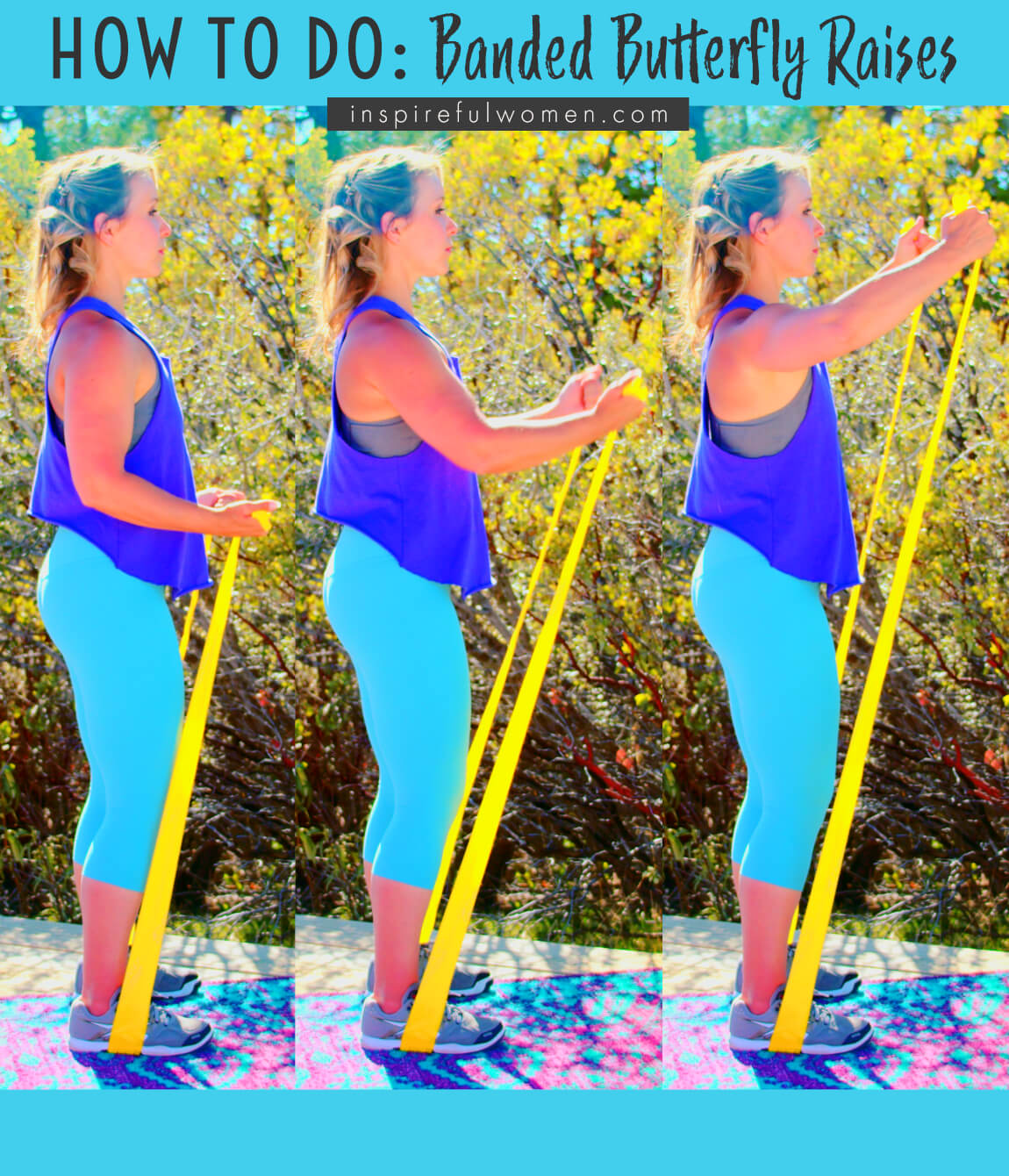
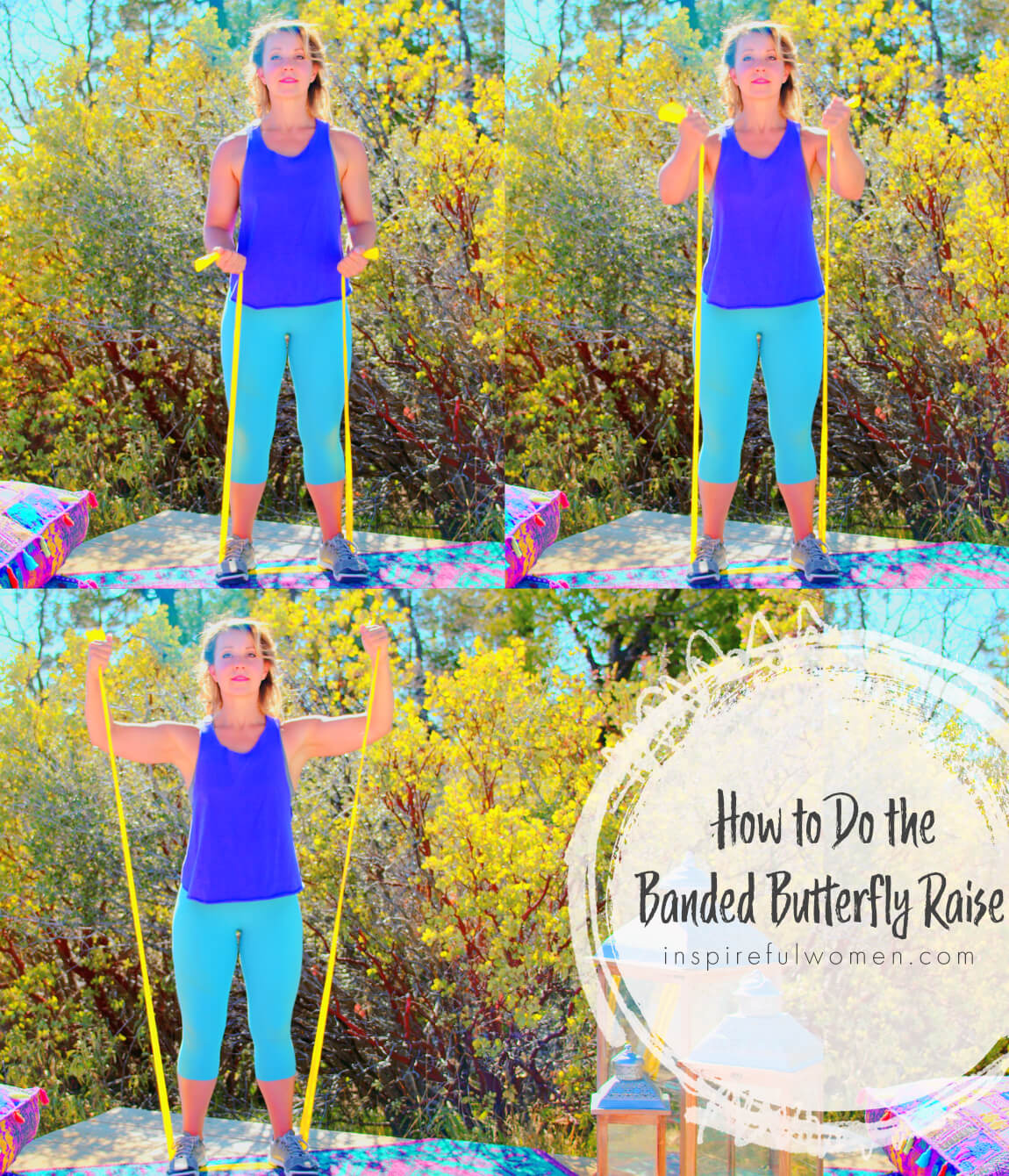
COMMON MISTAKES
COMMON MISTAKES
WHAT TO AVOID WITH THE Resistance Band Butterfly Raise
KEY TIP:
Guess what? Good news! Many avoids are the same for most movements. Once you learn the basics, there's really only a few extra avoids for each individual movement.
1. Avoid arms directly to sides
AVOID: Holding the arms out straight to the side
WHY NOT?
- May irritate the soft tissue in the shoulder.
- One benefit of this exercise is working the shoulder muscles in the scapular plane
- Working in the scapular plane is a safer and more functional position
WHAT TO DO:
- Move the arm in - angled about 30° towards the front - the position of your arms if you were holding them for a hug.
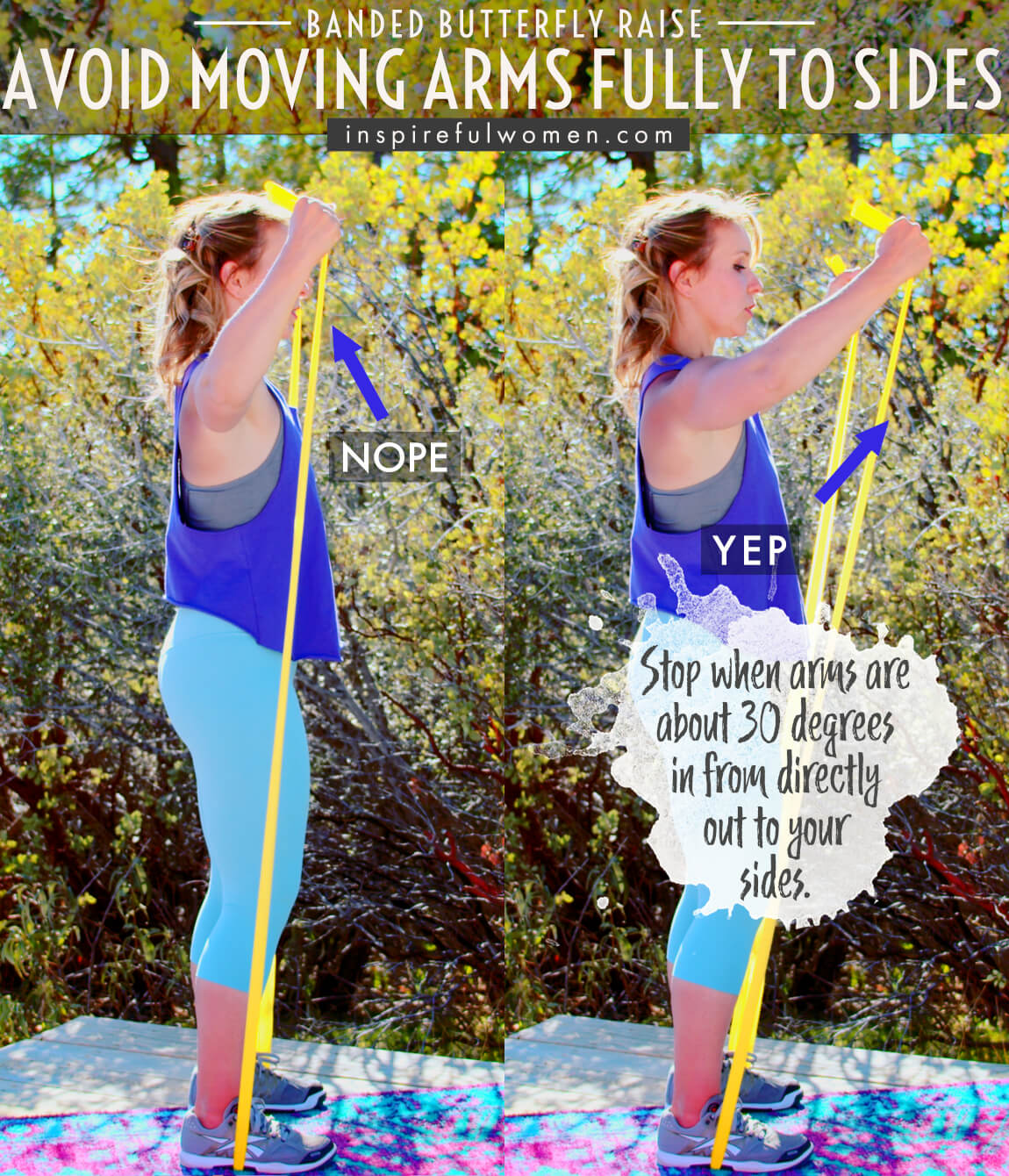
2. Avoid locking knees
AVOID: Avoid straightening or locking your knees.
WHY NOT?
- If your knees are locked you may feel pressure or discomfort in the low back or knees.
- This tends to decrease the lumbar curve, pull on the hamstrings and decrease the muscle activity of the legs.
- Locking the knees puts stress on the knee joint and can make it more difficult to maintain a neutral spine.
WHAT TO DO:
- You want your knees to be soft aka have a slight bend.
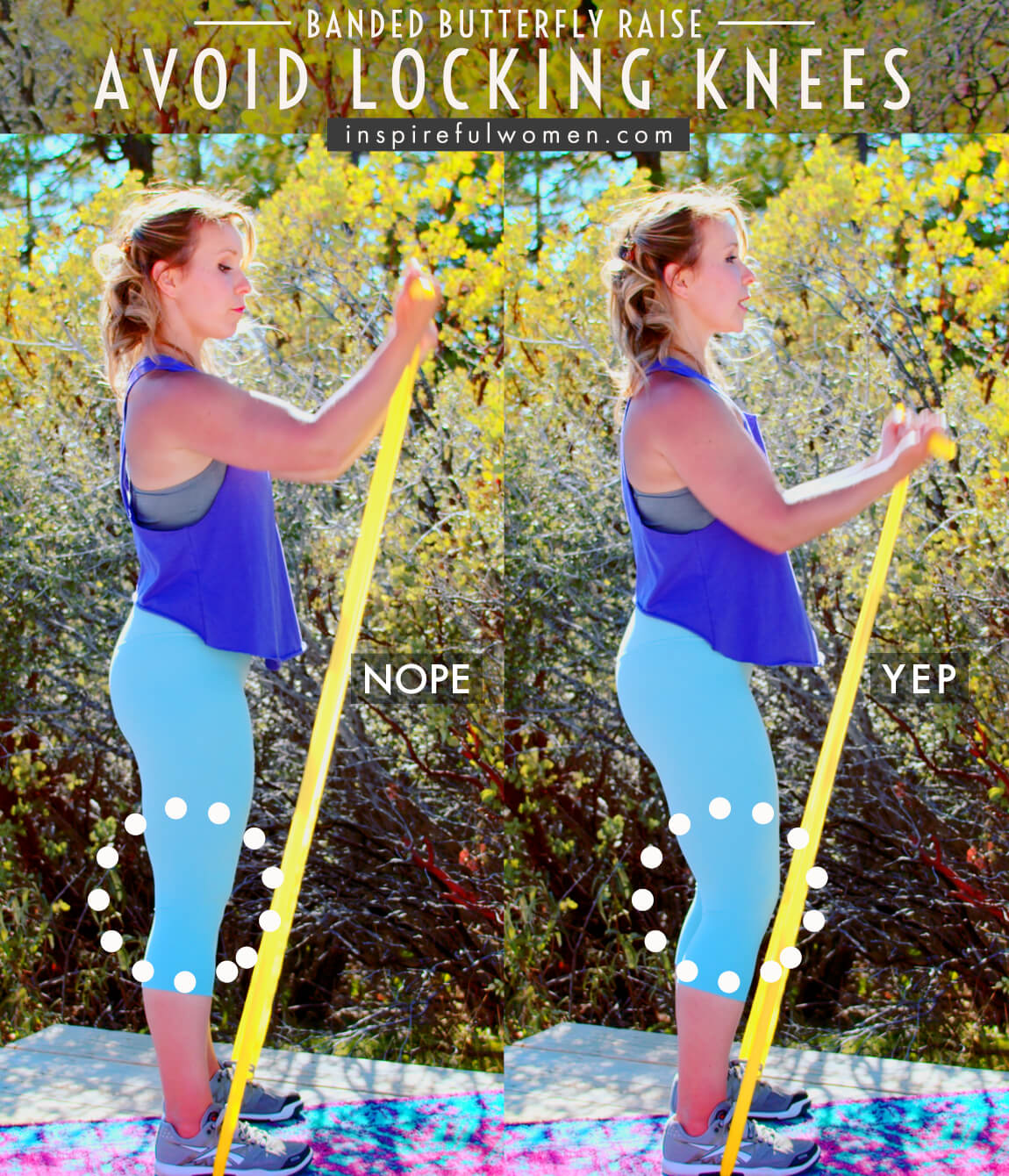
3. Avoid moving torso
AVOID: Rocking your torso back and forth as you lift the weight.
WHY NOT?
- This uses momentum rather than your muscles to move the weight, so will not be effective at fatiguing the muscles.
WHAT TO DO:
- Keep your torso still and upright during the movement. Utilize your core muscles to resist being pulled forward or pushed back as you life.
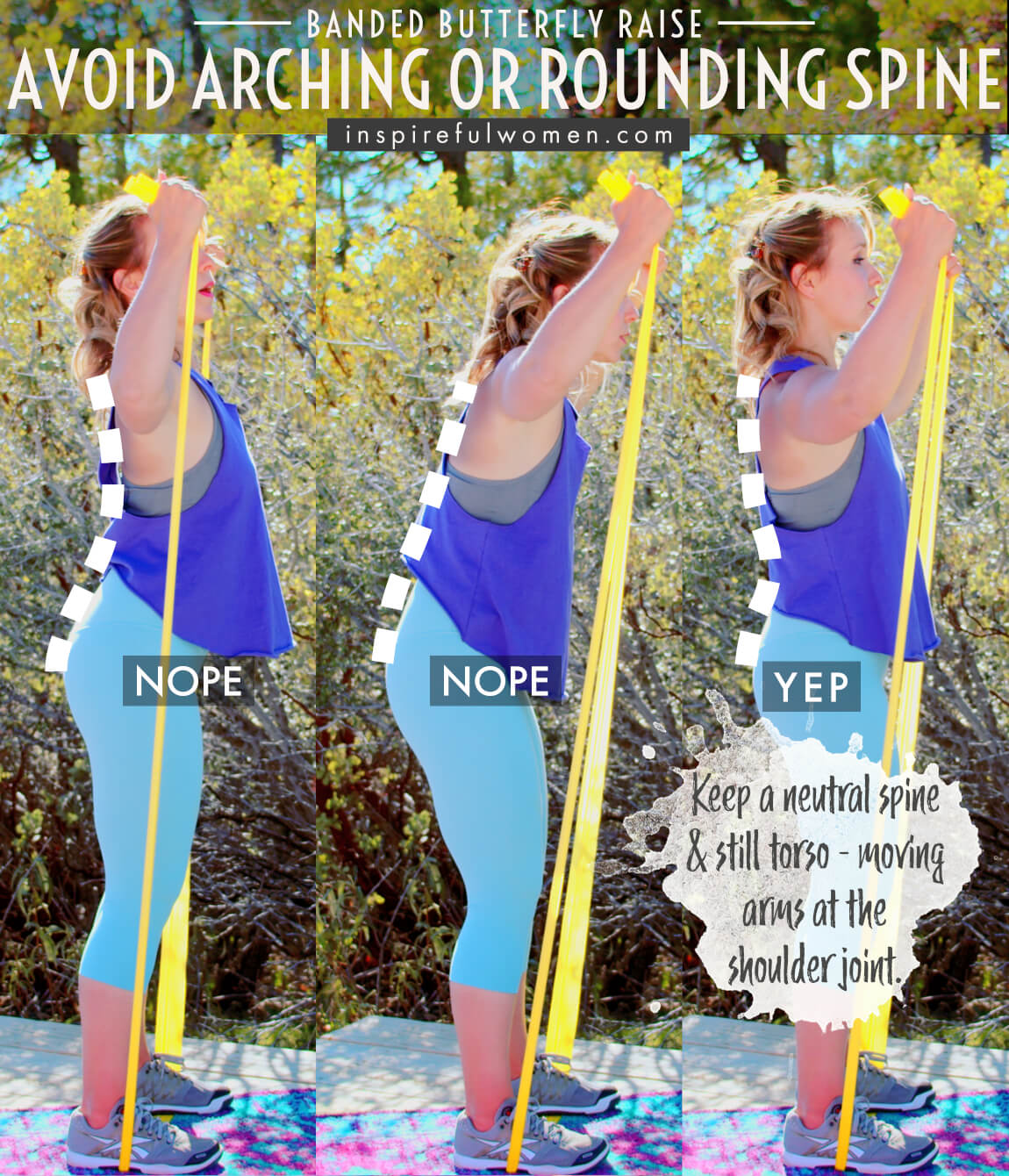
4. Avoid moving through the wrists
AVOID: Avoid bending your wrists.
WHY NOT?
- Poor alignment (bent forward or backward) or repetitive movement through the wrist can lead to joint and/or soft tissue irritation or injury over time.
- You may be substituting wrist movement for arm movement.
WHAT TO DO:
- Keep wrists in line with the forearm and still throughout the exercise.
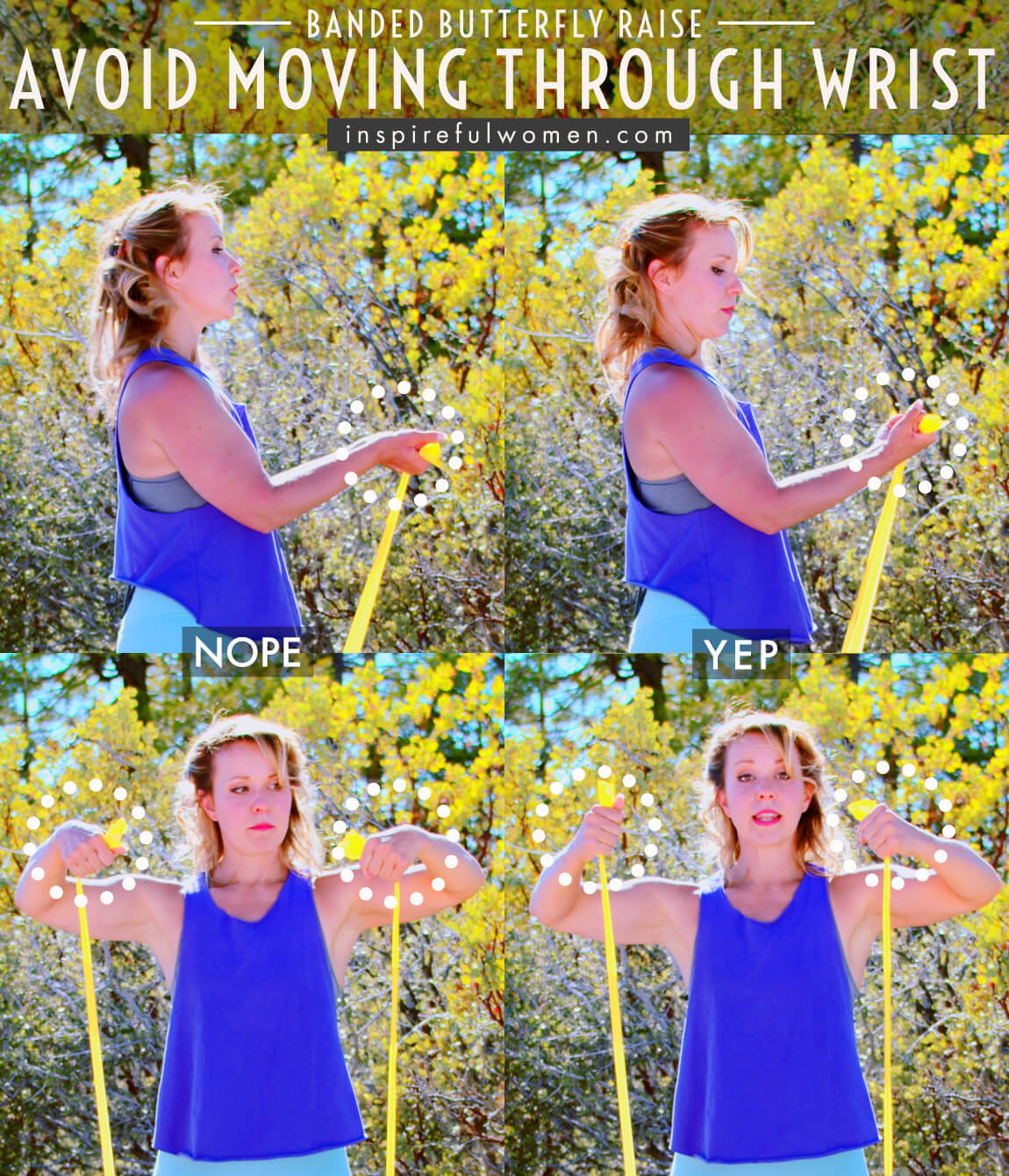
5. Avoid shoulders forward
AVOID: Avoid letting your shoulder blades drift forward, rounding your shoulders.
WHY NOT?
- This promotes the rounded posture that we already have issues with in everyday life - we want to use exercise as a time to train a healthier posture.
WHAT TO DO:
- Pull your shoulder blades down and back and hold them there.
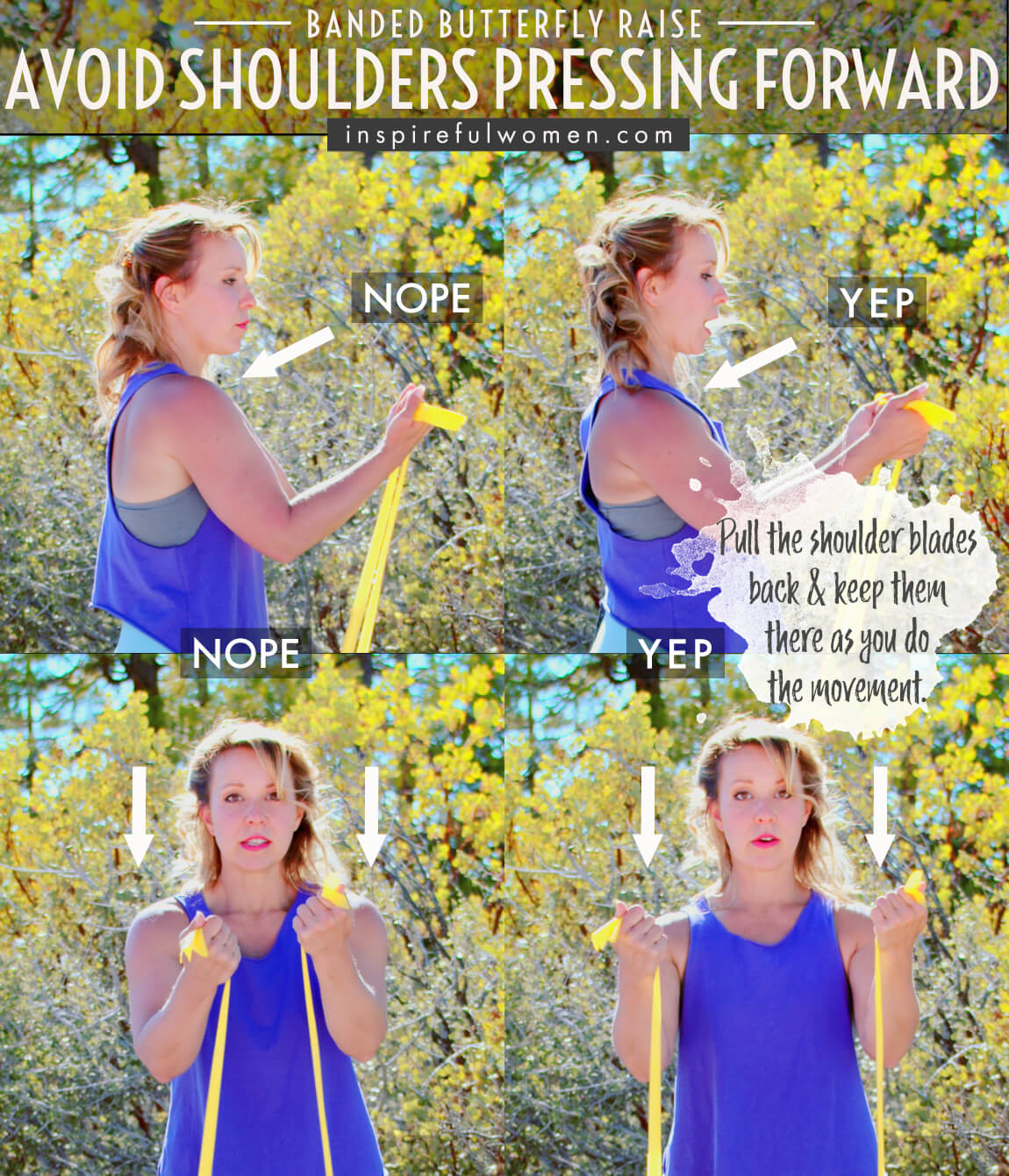
6. Troubleshoot
TROUBLESHOOT: If you are not feeling this exercise in your shoulder muscles
WHAT NOT TO DO:
- You might be moving your forearms rather than your through your shoulder - you can tell you are doing this if your elbows stay relatively close to your torso during the second half of the movement - avoid that.
WHAT TO DO:
- make sure your elbows move outward on the second half of the movement - that's how you know you are moving from your shoulder joint.
WHAT WE'RE DOING TODAY
WHAT & WHY
BENEFITS OF TRAINING THE Front and Side Deltoid
WHAT
CREATIVE COOL SHOULDER EXERCISE COMIN' RIGHT UP
What I love about this shoulder exercise is that it's more interesting and creative than most exercises. I mean, it's called a BUTTERFLY raise - that alone should show us that it's funner - compared to "lateral raises" - I mean c'mon there is absolutely no comparison in artisticness there! Athough I LOVE lateral raises, don't get me wrong, we should all do them, I'm just sayin'.
The butterfly raise works the muscles it works through a creative path of movement which I think is also more practical as to how we often move our arms in everyday life.
WORKS OUR LARGEST SHOULDER MUSCLE - NOT TREE LEAVES
This movement exercises the deltoid muscle. The deltoid? What's that?
Well, it isn't the type of deltoid that you can find on some trees.....turns out deltoid means triangular basically, and as an adjective if you see a tree with triangle shaped leaves (clue: quaking aspen trees are one) you can muse out loud "interesting...this tree has deltoid leaves" and sound super high-minded so you can potentially drive away any friends that super annoy you.
But for our purposes (we are not exercising tree leaves here today folks, although that sounds like less effort) the deltoid is our largest shoulder muscle - and not surprisingly it's triangular shaped. If we want to get super down to earth I guess we could tell people we're working our triangle muscles.
This shoulder muscle, the deltoid; lies on the top of the shoulder and crosses the shoulder joint to attach to the arm. What this tells us is that when we contract the fibers of this muscle, it will pull on the arm bone where it's attached and make the arm move. Cool right?
The deltoid muscle has three parts, kind of like 3 slivers of a pie slice - the front (anterior), side (lateral), and rear (posterior) parts. Each part is responsible for moving the arm in a different direction. This is important to consider when you are exercising - we want to include exercises that target each part of our shoulder.
EXERCISE THE FRONT & SIDE OF YOUR SHOULDER
Butterfly raises target both the front and side portions of the shoulder muscle. This is cool because many shoulder exercises work ony the front delt, or only the side delt - here we get both! All in one exercise.
The exercise is done by lifting the arms up to the front and moving them out to the sides. This will challenge your strength, shoulder stability and motor control.
WHY BOTHER DOING IT?
WHY
WHY DO WE EVEN CARE?
YOU WANT TO LIFT, HOLD & CARRY STUFF IN LIFE MORE EASILY?
Most of our daily activities involve moving our arms up to the front of us and/or out to the side - having strong deltoids improve your ability to lift, hold and carry in these positions.
SCAPULAR PLANE?? DON'T GO! KEEP READING!
This exercise also moves the shoulder into the scapular plane. When I first heard this term I was like, "ooooh this is going to probably not make sense to me." I do not have a fascination with super sciency sounding words, I tend to start turning off. I'd rather focus on creative sounding words like butterfly and quaking aspen. I used to write poetry and you can bet I never included the word scapular in any of my poems.
But we got this. The scapular plane is just pretty much a general area in space that we tend to move our arms within much of the time in everyday life. If you stick your arms our directly from your sides, really wide, and then angle them in about 30 degrees, that's about the right place.
If you imagine an opera singer sticking their arms out to sing a high note, you will probably be pretty close to being in that plane/position.
In fact, here's a picture:
The scapular plane is a very functional position - when we use our arms in many daily activities they are frequently in this plane. Things like cooking, reading, knitting, driving, writing, eating; we could really go on and on.
This makes a lot of sense when you think about the shoulder blade (have we ever thought about it before? I hadn't - but let's do that now). The shoulder blade is a small wing-shaped bone that lies on the rib cage, and the rib cage is rounded - because the ribs come from the spine and around the torso to attach on the sternum. The shoulder blade lies and moves along this curved surface - so the shape of the ribs is the scapular plane - the plane that the shoulder blade moves in. It does not move straight out and in but around the curved surface of the ribcage.
GREAT HEALTHY POSITION TO EXERCISE THE SHOULDER IN
An easier way to think of this is if you lift your arm up as if you were drinking a cup of coffee - chances are pretty good your arm is in the scapular plane. In this position there is less stress on the rotator cuff muscles and the ligaments and joint surfaces of the shoulder joint, making it a safer position to use when exercising the arms with resistance.
DECREASE INJURY & DEGENERATIVE CHANGES TO JOINTS
Butterfly raises will also strengthen the muscles used to stabilize the shoulder blades for healthier shoulder joint movement - which decreases injury and degenerative (wear and tear on the joints and ligaments) changes over time.
EVERYDAY LIFE
EVERYDAY LIFE &
MUSCLE FUNCTION
HOW WE USE OUR FRONT & SIDE DELTS IN EVERYDAY LIFE
The parts of the deltoid work together when lifting the arm - the direction the arm is being lifted will bias different parts of the muscle. When you lift a heavy load, or hold an object for a long time - more of the deltoid muscle will become active to help out - regardless of the position of the arm.
1. FRONT (ANTERIOR) AND SIDE (LATERAL) DELTOID WORKING TOGETHER
- Driving
- Holding a book
- Knitting
- Pushing a stroller
- Pushing a wheelbarrow
- Eating
- Carrying kids in front of the body
- Computer work
- Carrying kids on your hip
- Carrying grocery bag on one side
- Washing your hair
2. LIFTING TO THE FRONT OF THE BODY (FRONT/ANTERIOR DELT)
- Getting dishes out of the cupboard
- Hanging clothes in the closet
- Washing windows
- Lifting a child out of a crib
HOW TO FEEL WHAT MUSCLE IS WORKING
How to Feel What Muscle is Working
Place the opposite hand on top of your shoulder - lift the arm straight out to the side - you should feel the side deltoid contract.
Shift the fingers forward about half of an inch and lift the arm to the front. You should feel the front deltoid contract.
SCIENCY STUFF
SCIENCY STUFF
SPIFFILICIOUS FACTS ABOUT MUSCLES & MOVES
The deltoid muscle forms a cap or half-circle of muscle that surrounds the top half of the shoulder joint. The three portions of the muscle originate from the collar bone (clavicle) and the upper portion of the shoulder blade (scapula) like a fan. All three portions of the deltoid cross over the joint, then share a common attachment on the deltoid tubersosity (a bony protuberance on the humerus).
The deltoid muscle works in coordination with the rotator cuff muscles to stabilize the shoulder joint during all movement of the arm. The supraspinatus is one of the rotator cuff muscles. The supraspinatus originates on the upper part of the shoulder blade and travels under the flat bony surface of the shoulder blade - the acromion process. The muscle travels through the acomion arch, which is like a small tunnel between the acromion process, ligaments and the head of the humerus. Muscles and bursa that lie in the acromion arch are vulnerable to damage that can result from improper exercise form, repetitive overhead lifting, poor posture, and muscle imbalances.
Interestingly, the supraspinatus muscle refers pain to the deltoid tuberosity. Leading many people to believe they have injured their deltoid muscle when in fact the pain is coming from a supraspinatus injury.
ALLLL MUSCLES & WHEN
ALL MUSCLES WORKING & WHEN DURING Band butterfly raises
The core stabilizers work to hold the spine in a neutral position throughout the exercise.
The biceps is active to hold the elbow bent to 90 degrees and the forearms in supination (soft side/palms up). The shoulder is held in external rotation by the infraspinatus and teres minor muscles (part of the rotator cuff).
The biceps and anterior deltoid begin the movement by contracting concentrically to lift the upper arm up and beginning to move it out of external rotation. As the arm lifts up and rotates the muscles surrounding the shoulder blade (pectoralis, traps, levator, serratus anterior, and rotator cuff) ) work to move the shoulder blade and to keep the shoulder joint stable.
At approximately 45 degrees of upward motion (in the scapular plane) the lateral deltoid becomes more active to lift the arm as it travels outwards. The anterior deltoid continues to rotate the upper arm towards being in a neutral rotation (the shoulder joint has rotated from an externally rotated position to a neutrally rotated position - so a relative internal rotation movement).
At this point, the resistance of the band is the greatest, the posterior deltoid will become more active to hold the end position and prevent the band from pulling the hand down and rotating the upper arm.
To control the return to the starting position, the same muscles work eccentrically.
PIN IT FOR LATER!
